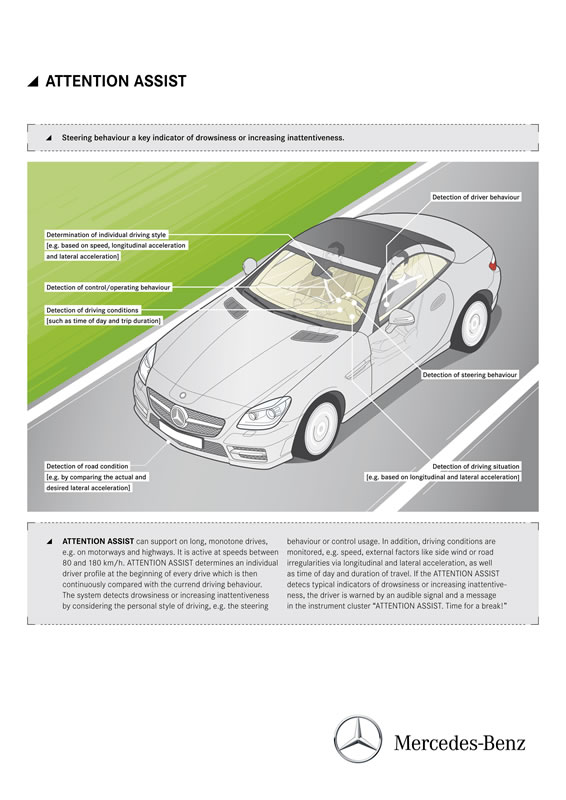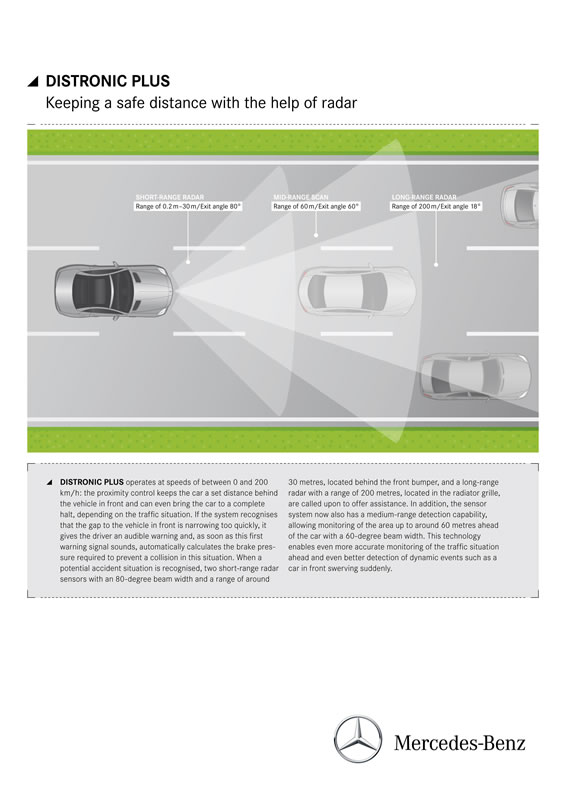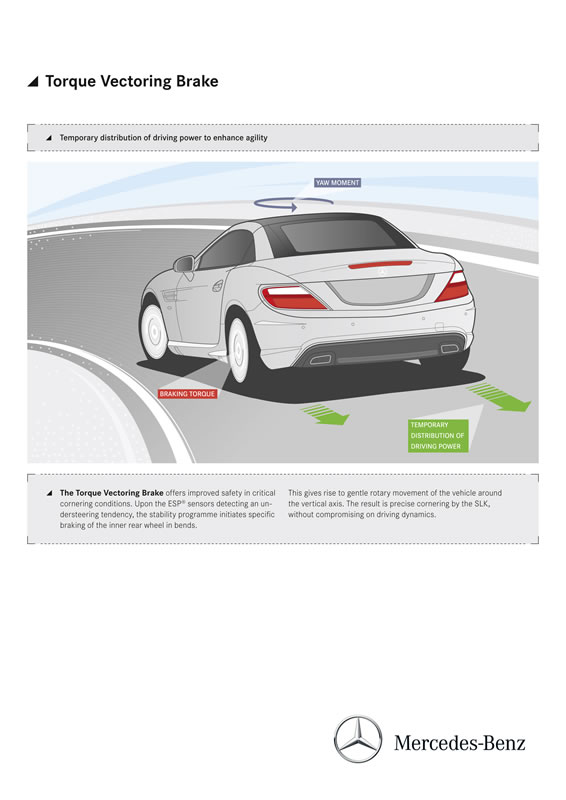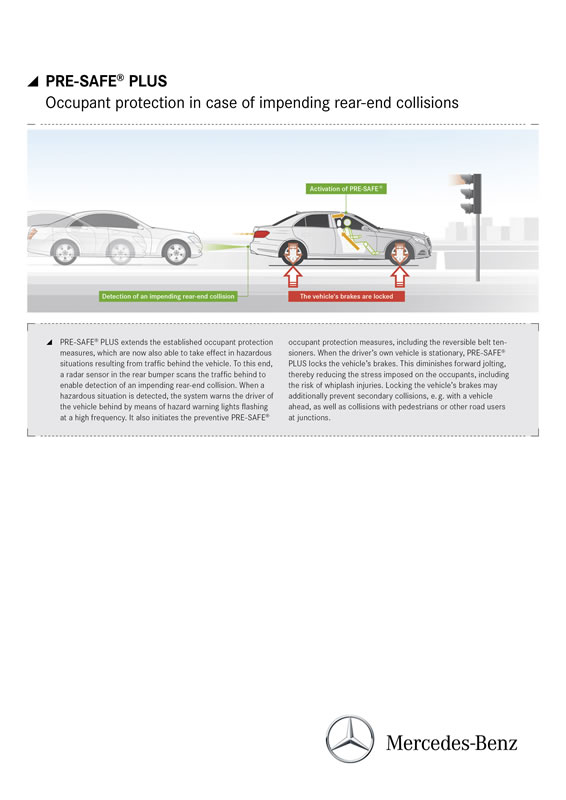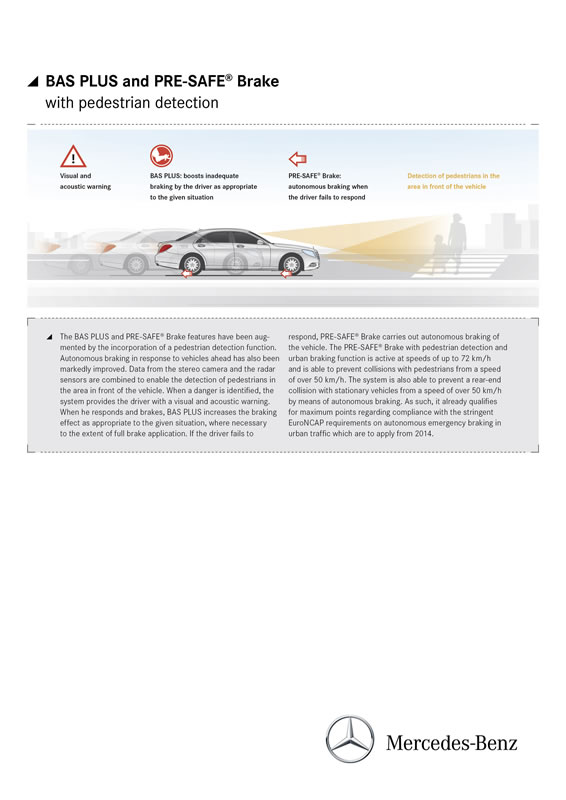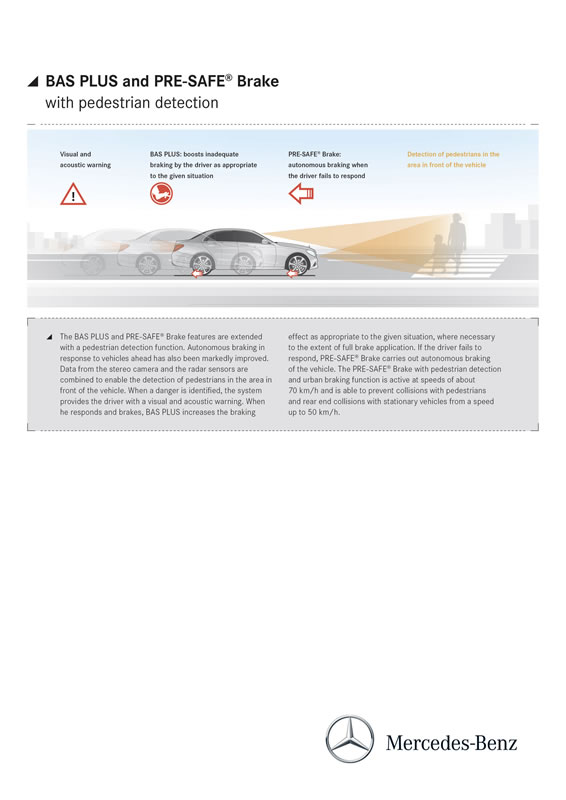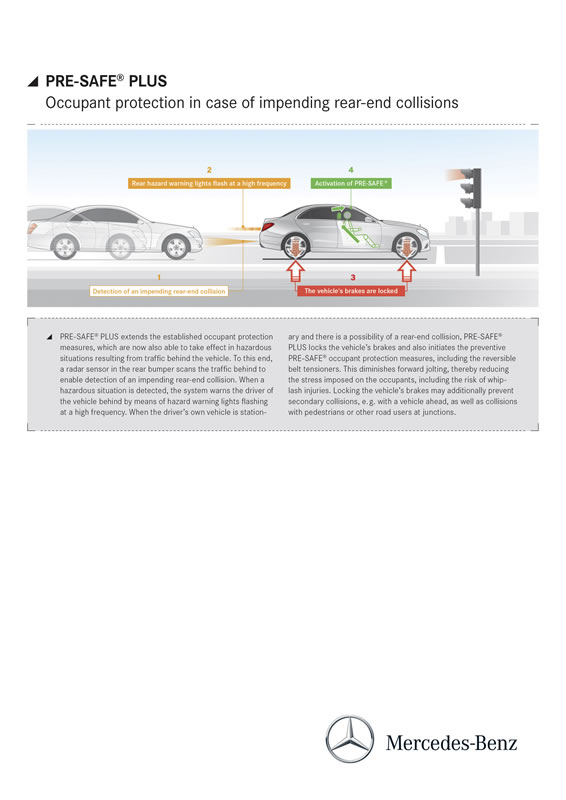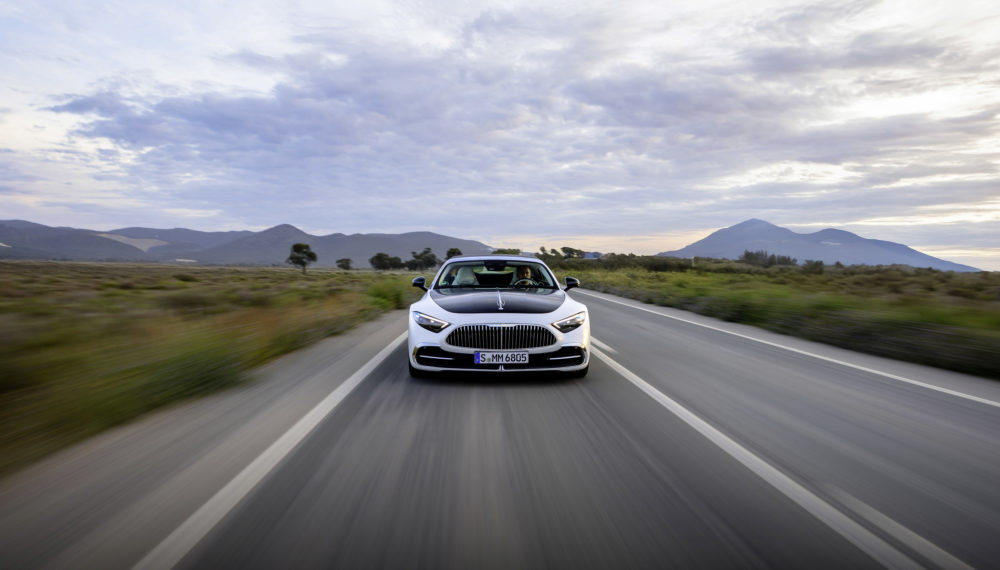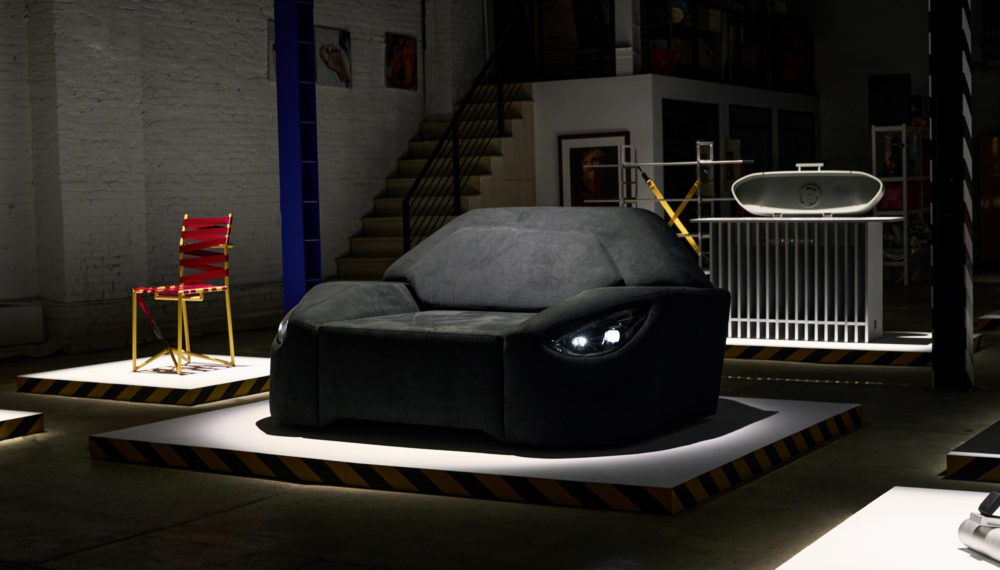With the preventive occupant protection system PRE-SAFE® Mercedes-Benz ushered in a new era of vehicle safety in 2002, bringing to an end the separation of active and passive safety. PRE-SAFE® is able to activate preventive protection measures for car passengers. The aim is to prepare the car and its occupants for an impending collision so that seat belts and airbags can fulfil their protective function to the full.
PRE-SAFE® is currently available in 16 model series right across the model range of Mercedes-Benz Cars from the A-Class to the S-Class and can currently take preventive measures in up to 13 potentially hazardous scenarios. More than half of all Mercedes-Benz passenger car model series come with PRE-SAFE® as standard. In this interview Mercedes-Benz engineers Prof. Rodolfo Schöneburg (54) and Karl-Heinz Baumann (62) look back on the start of series-production development in 1999.
Mr Baumann, is it true that your daughter had a biology book with a picture of a cat dropping to its feet? Or is it just a popular myth that this inspired you to evolve the idea of a car with reflexes – as the fundamental idea behind PRE-SAFE®?
Baumann (laughs): Well, to be precise it was actually a Mickey Mouse comic book. I asked my daughter, who was eight at the time, how she would illustrate the fact that every living being reacts reflexively to sudden dangers. In response to which, she showed me her comic with a drawing of a cat. The comic still exists, by the way, and has even been exhibited on several occasions as part of Mercedes-Benz’s touring exhibition “Prepare to be safe”.
How did you come up with the idea of also utilising the time prior to a crash for safety measures – this being the radically new aspect of PRE-SAFE®?
Schöneburg: As with so many Mercedes-Benz safety innovations, the decisive impulse that triggered the development of PRE-SAFE® was real-world crashes. These revealed that the symptoms of an impending accident are frequently manifested before the actual collision. This means that valuable time used to be lost when the protection systems were only activated once a collision had occurred. PRE-SAFE® makes use of this time, from initial identification of a driving situation harbouring crash potential to an actual collision, in order to provide the occupants with preventive protection.
What sort of timescales are we talking about here?
Schöneburg: An accident occurs within around 100 milliseconds. If you drive into a wall at 50 km/h, for example, around 0.1 of a second elapses before the car comes to a standstill, i.e. within 100 milliseconds everything must be activated and the occupant must be contained by the seat belt and airbag. But when we use the pre-accident phase with PRE-SAFE® we have not just milliseconds of time, but seconds. This enables us to bring the backrests into an upright position and to tension the seat belts as well.
What were the biggest obstacles in developing PRE-SAFE® to production standard?
Schöneburg: First of all, I think the greatest achievement was the idea itself. For many years there was a mental block on the subject of pre-crash. The general view was that it needed to be one hundred percent certain that an accident would occur before features such as the airbags could be activated. The mental leap was the insight that absolute certainty that an accident will happen will probably never be attainable. That we need to work on the basis of the probability of an accident, and that we therefore need to concern ourselves with reversible systems, as there is always a possibility that it may be possible to avoid an impending accident. I believe that was the essential innovation!
How were the PRE-SAFE® systems tested?
Schöneburg: We carried out in-depth testing of PRE-SAFE® at test sites, in road traffic and in the simulator, of course. In order to optimise the system’s capacity to identify situations, during development of the second generation, when we combined PRE-SAFE® with the information from DISTRONIC PLUS, the new technology was installed together with additional measuring equipment in taxis, for example. In 2007 these vehicles covered over 400,000 kilometres in Stuttgart city traffic. Dense stop-and-go traffic, fast and frequent lane-changes plus varying road surfaces with potholes and manhole covers provided ideal conditions for us to verify the algorithm. Because a kerb close by or radar reflections from tram rails must not lead to activation of the occupant protection systems, of course.
Is it possible to put a figure on how many lives PRE-SAFE® has saved since it was introduced 12 years ago?
Baumann: There are no statistics to show how many lives PRE-SAFE® has helped to save in the meantime, or how many injuries it has helped to prevent or minimise. However, analyses carried out by our accident research team have shown that more than two-thirds of all traffic accidents are preceded by critical driving situations which enable conclusions to be drawn about risks or impending collisions. Example crash tests conducted in the course of the development process additionally showed that PRE-SAFE® can reduce the risk of serious injury in frontal impact circumstances by up to a quarter.
As with ABS or ESP®, other manufacturers have since followed safety pioneer Mercedes-Benz and developed preventive safety systems similar to PRE-SAFE®. Does that annoy you?
Schöneburg: On the contrary. After all, this is ultimately to the benefit of all road users. Many safety innovations which were first introduced onto the market by Mercedes-Benz are now also available from other automotive manufacturers. An aspect that is particularly important to me is that PRE-SAFE® is not reserved exclusively for the top models from Mercedes-Benz, but is currently available in a total of 16 model series covering the entire model range, from the A to the S-Class.
Baumann: Mercedes-Benz has set itself the aim of retaining its trendsetter function in the area of safety. If the other manufacturers choose to follow this trail, I see this as an affirmation of our pioneering work.
The PRE-SAFE® in the new S-Class covers around a dozen accident scenarios. Are any further PRE-SAFE® innovations conceivable?
Schöneburg: Inside and outside of the company, the wealth of safety features that we have in our series production vehicles today may have given rise to the impression that not a great deal more is to be expected here. This perception is wrong – we have a whole host of other ideas aimed at improving vehicle safety further.
In concrete terms, what will the next PRE-SAFE® innovation be?
Schöneburg: We are currently concentrating on reducing the strain on the upper torso in a side-on collision.
The history of PRE-SAFE®:
- 2002: Introduction in the S-Class (W 220); functions: preventive tensioning of the front seat belts, better positioning of the power-adjustable front passenger seat, automatic closing of the sliding sunroof (optional)
- 2005: Combination with Brake Assist PLUS; extended functions: automatic closing of the side windows, inflation of side bolsters on multicontour front seats (optional)
- 2006: PRE-SAFE® activation by other assistance systems using radar technology
- 2011: Debut in the compact class (B-Class W 246)
- 2013: Introduction of new functions in the S-Class: PRE-SAFE® PLUS and PRE-SAFE® impulse, link with the stereo camera PRE-SAFE® PLUS: Detects an impending rear-end collision, warns the traffic following behind by means of high-frequency flashing of the rear hazard warning lights, locks the brakes if the vehicle is stationary to reduce forward jolt and thus reduces the strain placed on the occupants and the risk of secondary accidents. PRE-SAFE® is activated immediately prior to the impact.PRE-SAFE® impulse: Extends the protective function of the front seat belt: at an early phase of the crash, before the resulting deceleration sets in, the front occupants are pulled away from the direction of impact and deeper into their seats by their seat belts. By the time the accident enters the phase when loads peak, the extra distance they are retracted by can be used while dissipating energy in a controlled fashion thanks to additional force limiting in the belt buckle. Pre-acceleration and force limitation allow the occupants to be temporarily isolated from the effects of the crash.

